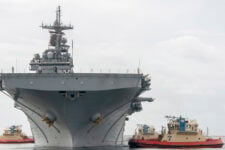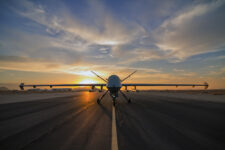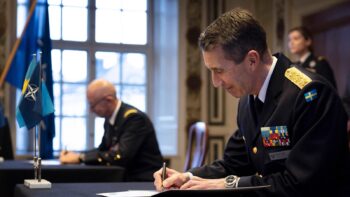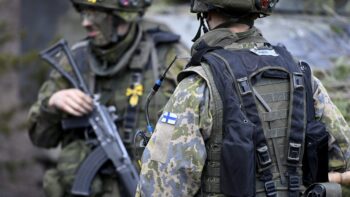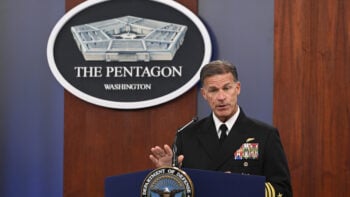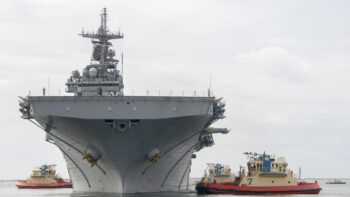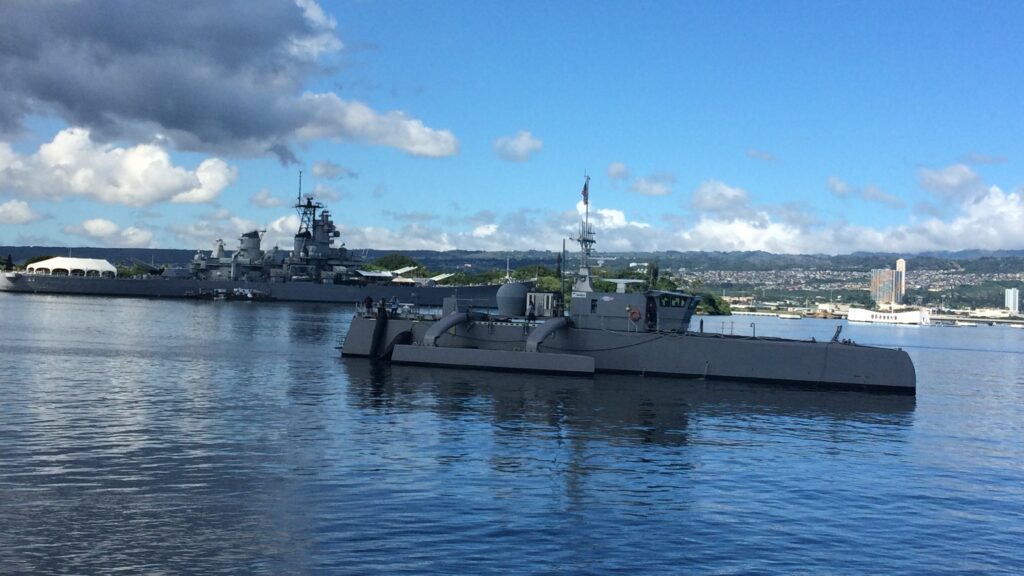
The experimental unmanned Sea Hunter is the forerunner of the Navy’s proposed fleet of robotic warships. (U.S. Navy photo)
SEA AIR SPACE 2023 — The Navy’s two top leaders today announced the service is ready to expand the use of unmanned systems to the broader fleet, and will start with US 4th Fleet later this summer.
The Navy is “ready to scale these operations at the fleet level,” Chief of Naval Operations Adm. Michael Gilday told an audience here at the Sea Air Space exposition.
“The 4th Fleet area of operations will provide us with an environment best suited to operationalize the concepts of Task Force 59 that’s worked tirelessly to develop to increase our maritime domain awareness,” Navy Secretary Carlos Del Toro said during joint remarks with the CNO.
While short on specific details, the service secretary and chief said the Navy plans to begin integrating air and surface unmanned systems into US 4th Fleet, which is part of US Southern Command. Those capabilities will begin operations in that region during the UNITAS 2023 exercise scheduled for July.
Read more of Breaking Defense’s Sea Air Space coverage.
In 2021, the Navy first established Task Force 59, an organization based in Bahrain and focused largely on experimenting with commercially available unmanned systems and artificial intelligence.
That office, as Breaking Defense has reported, has conducted numerous exercises with industry since its inception. The three star admiral overseeing it, Vice Adm. Brad Cooper, has said he wants to have 100 unmanned systems in his AOR by summer 2023.
While both Navy leaders emphasized the success of Task Force 59, they said the new unmanned systems at US 4th Fleet would be “integrated into the command structure.” That represents a shift from TF59, which focused on experimenting with unmanned tech, towards an operational environment where 4th Fleet will aim to use the technology in day-to-day operations.
“We wanted to take a different approach rather than a task force this time because as I mentioned, we’re integrating additional sensors into the battle space,” the CNO told a group of reporters following the announcement.
Del Toro said the choice of US 4th Fleet, whose area of responsibility falls mostly into Central and Southern America, was driven in part by lessons learned from US 5th Fleet’s experimentation efforts. He also said he expects the additional sensors to greatly aid the Navy in combating drug running and illegal fishing in the region.
“The goal here is to have far better [intelligence, surveillance and reconnaissance] across the entire area of operations so that we can actually deter the flow of drugs into the United States as well as help our allies and partners [in stopping] illegal fishing,” Del Toro told reporters.
“We want to scale this,” Gilday added. “The Southern Command AOR seemed like a perfect environment for us to do this. And to get after… those real world missions that we’re responsible for with respect to counter trafficking as well as the illegal and unregulated fishing.”
The Navy leaders declined to characterize the number of unmanned systems that would ultimately be sent to US 4th Fleet, stressing that much of the planning work is still being done and more details would follow in July during UNITAS 2023.
Of course, the Navy’s unmanned efforts are spread through the service. Around the same time as Task Force 59 was set up, Gilday established a service-wide “Unmanned Task Force,” which has received much less in the way of public attention. Asked today about what that panel has been doing to ultimately contribute to the Navy’s expansion of unmanned systems, the CNO said the unmanned task force is largely focused on classified payload development.






